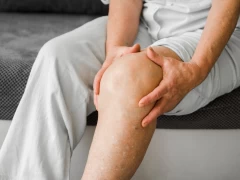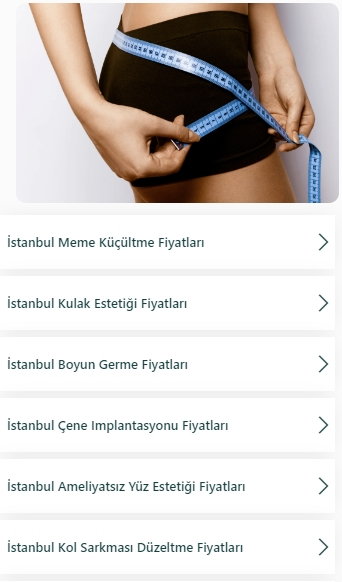
Carpal Tunnel Syndrome and Innovative Treatment Approaches
- Carpal Tunnel Syndrome and Innovative Treatment Approaches
- What is Carpal Tunnel Syndrome?
- Diagnostic Methods
- Carpal Tunnel Syndrome Treatment Methods
- When is Surgical Intervention Necessary?
- Conclusion and Recommendations
Nowadays, many people visit our clinic with complaints of wrist pain, numbness, and weakness. One of the most common causes of these symptoms is Carpal Tunnel Syndrome (CTS), particularly prevalent among computer users, individuals engaged in handicrafts, and professionals performing repetitive hand movements. As a Physical Therapy and Rehabilitation specialist, I would like to emphasize the significance of both traditional and innovative approaches in the treatment of this syndrome.
What is Carpal Tunnel Syndrome?
Carpal Tunnel Syndrome occurs due to compression of the median nerve at the wrist. This nerve is responsible for the sensation in the thumb, index finger, middle finger, and half of the ring finger. Compression of the median nerve can lead to the following symptoms:
- Numbness and tingling: Especially increasing at night
- Pain: Severe pain radiating from the wrist to the fingers
- Weakness: Decreased grip strength and tendency to drop objects
- Swelling sensation: A feeling of swelling in the hand despite no actual swelling
Diagnostic Methods
To diagnose CTS in our patients, we utilize clinical evaluation and imaging techniques:
- Clinical tests such as Tinel’s Test and Phalen’s Test
- Electromyography (EMG) and nerve conduction studies to determine the severity of nerve compression
- Ultrasonography (USG) and Magnetic Resonance Imaging (MRI) to assess the nerve and surrounding tissues

Carpal Tunnel Syndrome Treatment Methods
The treatment process varies depending on the patient’s symptoms and the severity of the condition. While conservative treatments are generally our first choice for moderate cases, surgical intervention may be necessary in advanced cases.
1. Traditional Treatment Methods
- Wrist splinting: Wearing a splint, especially at night, helps maintain proper wrist positioning and reduces pressure on the nerve.
- Physical therapy applications: Techniques such as ultrasound, low-level laser therapy, and manual therapy aim to reduce edema around the nerve.
- Medication therapy: Nonsteroidal anti-inflammatory drugs (NSAIDs) and vitamin B supplements can support nerve healing.
- Steroid injections: These can help relieve symptoms by reducing inflammation around the nerve.
2. Innovative Treatment Approaches
In recent years, regenerative medicine techniques have shown highly successful results in CTS treatment. Some of the innovative treatment methods we frequently use in our clinic include:
PRP (Platelet-Rich Plasma) Therapy: PRP is a plasma rich in growth factors obtained from the patient’s own blood. When injected into the carpal tunnel area, it accelerates nerve healing, reduces inflammation, and supports tissue repair. The benefits of PRP include:
- Accelerates tissue healing
- A side-effect-free alternative to cortisone
- Biocompatible since it is derived from the patient's own cells
Prolotherapy: Prolotherapy involves injecting irritant agents such as hypertonic dextrose to strengthen weakened connective tissues. Its use in CTS provides the following advantages:
- Strengthens connective tissues, reducing pressure on the nerve
- Provides long-term improvement in chronic cases
- Has minimal side effects
Stem Cell Therapy: Stem cell therapy, which promotes cellular regeneration, offers an effective solution for advanced forms of CTS. Stem cells derived from adipose (fat) tissue or bone marrow are injected around the median nerve to support its regeneration.
Laser and Shockwave Therapy: Low-level laser therapy and extracorporeal shockwave therapy (ESWT) aid in reducing pain and inflammation while accelerating tissue healing. We achieve successful outcomes, particularly in mild to moderate cases.
When is Surgical Intervention Necessary?
Surgical treatment is required for cases that do not respond to conservative methods or when EMG results indicate severe nerve compression. Endoscopic or open carpal tunnel release surgery aims to relieve pressure on the median nerve, potentially eliminating symptoms completely.
Conclusion and Recommendations
Carpal Tunnel Syndrome is a reversible condition when detected early and treated appropriately. We prioritize creating a personalized treatment plan to improve our patients’ quality of life. In addition to traditional methods, innovative approaches such as PRP, prolotherapy, and stem cell therapy can prevent the progression of CTS and reduce the need for surgery.
If you experience numbness, pain, or weakness in your wrist, I recommend consulting a Physical Therapy and Rehabilitation specialist without delay. With the right treatment approach, it is possible to restore your hand’s health.

Dr. Elif Berber
Physical Therapy and Rehabilitation




